Road trip through the North of Asturias
Hello once again!
In this post, I want to talk to you about a route that I carried out three years ago with my mum, around the North of Asturias. We also stopped at the Playa de las Catedrales before entering Asturian territory, but I have already spoken about this beach in another post: 5 places to see in the north of Galicia, so in this one I am only going to focus on the towns in Asturia that we visited.
It was only a week long road trip, therefore, we only saw a few places in the coastal area closest to Galicia, since we didn't have time to go further away. However, there are other towns such as Lastres, Llanes or Ribadesella which are also really worth visiting and that I hope to visit soon.
The Northern area of Spain will leave anyone who has gone to visit it in love, since in every corner of Asturias, Basque Country, Galicia etc., there is something that is worth seeing and that is very different to what you can find in the rest of Spain.
On our trip, we focused on visiting the coastal area and the dreamlike maritime towns and beaches These towns which I am going to talk to you about stand out for their landscapes and gastronomy.
Tapia de Casariego
This beautiful maritime town was our first stop (after the Playa de las Catedrales). It is a town in the Western part of Asturias where you can enjoy their maritime setting and stop at some of their viewpoints; their port is full of characteristic houses, restaurants where you can try delicious Asturian cuisine and their beaches.
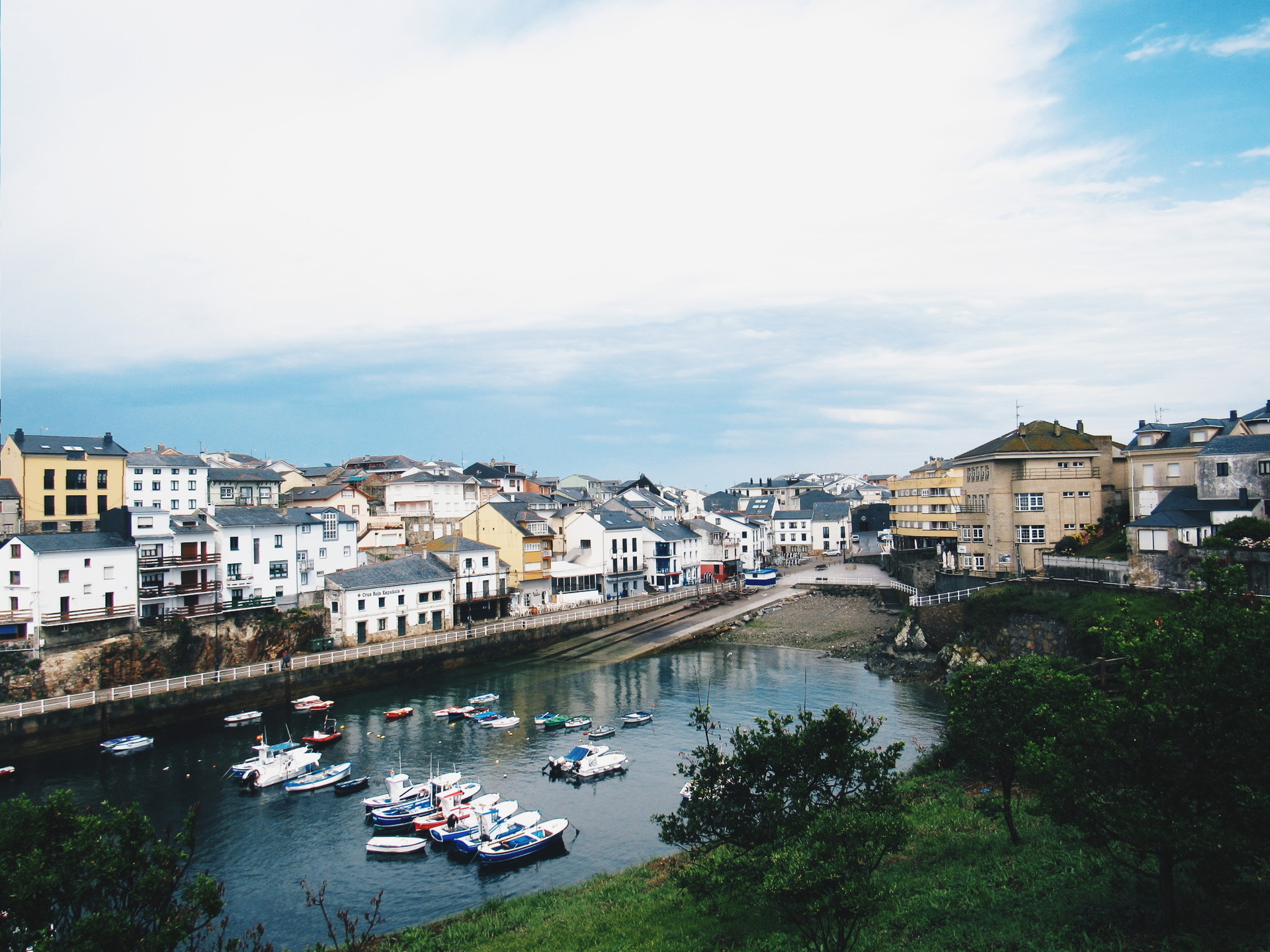
It is one of the towns which people go through when doing the Camino de Santiago (Pilgrim's trek) on the Northern part of the route. Nowadays, it is one of the most frequented holiday and leisure destinations in this area of Asturias. And now you will find out why.
In the upper part of the town there is the historic centre, where you can come across interesting places such as the Town Hall in the Constitution Square, or the Church of San Esteban with its neogothic style.
But the zone in which we definitely dedicated the most time to during our visit was the sea port and its whole route along the coast.
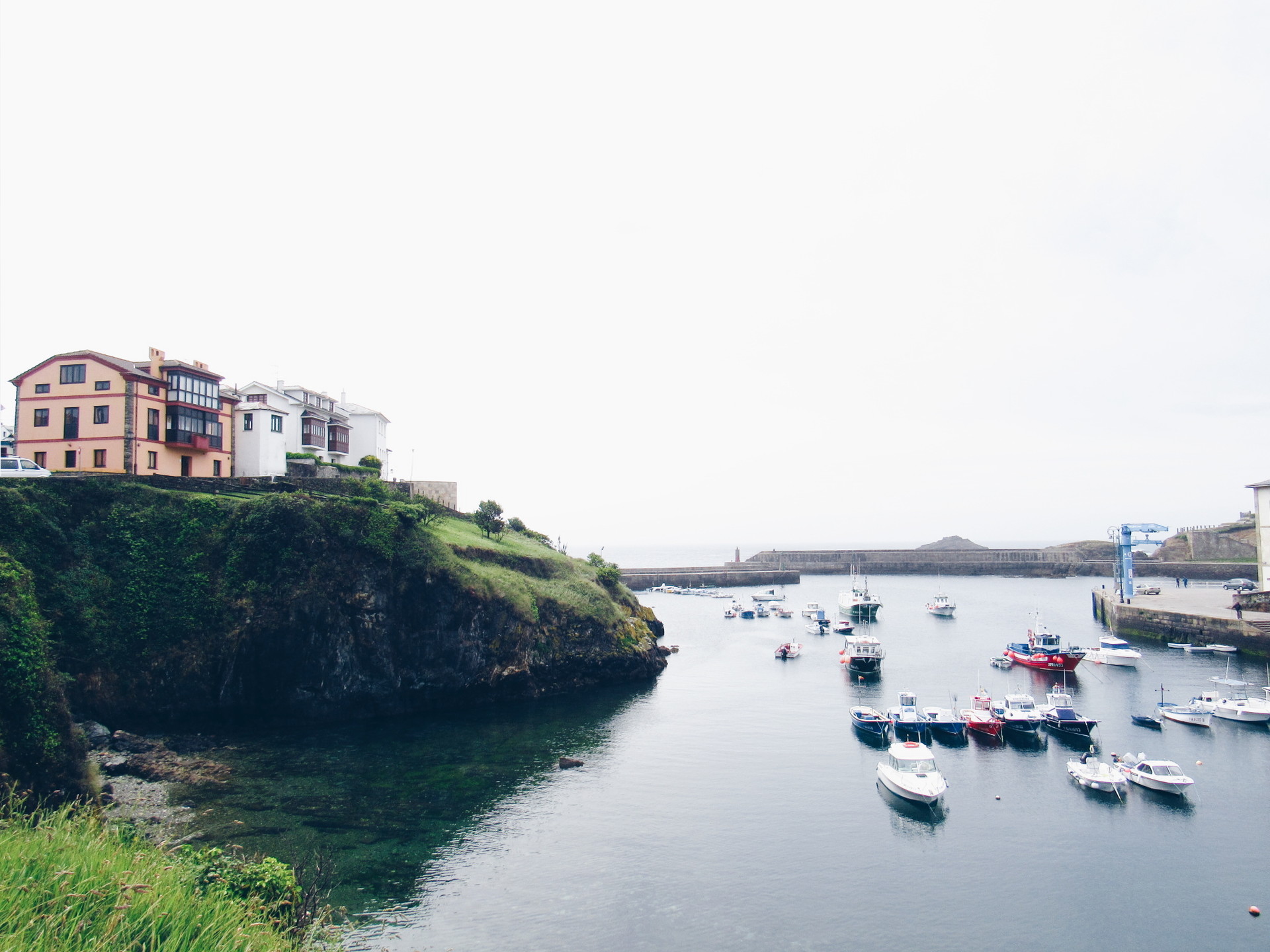
Going along until the end on the right-hand side of the port, we came across a lighthouse in the distance situated on a tiny island called the Isla de Tapia, which is connected to the town by a dock. In addition to this 24 metre tall old lighthouse, it is worth going towards this area for the beautiful sea views.
Later, we decided to discover what was on the left-hand side part of the port and when we kept walking, we came across several viewpoints; such as the famous Os Canois viewpoint, which still to this day has some cannons which were used to protect the town in the olden days.
Further on, we also saw an interesting man-made pool, like a kind of small reservoir, which people usually go in during the summer. We went in the middle of winter, so it was completely empty. Almost at the end of the route, we came across the San Blas viewpoint which you can see several beaches from. It was interesting because along the whole route we only came across a couple of couples; it was in the morning, but the town was incredibly peaceful.
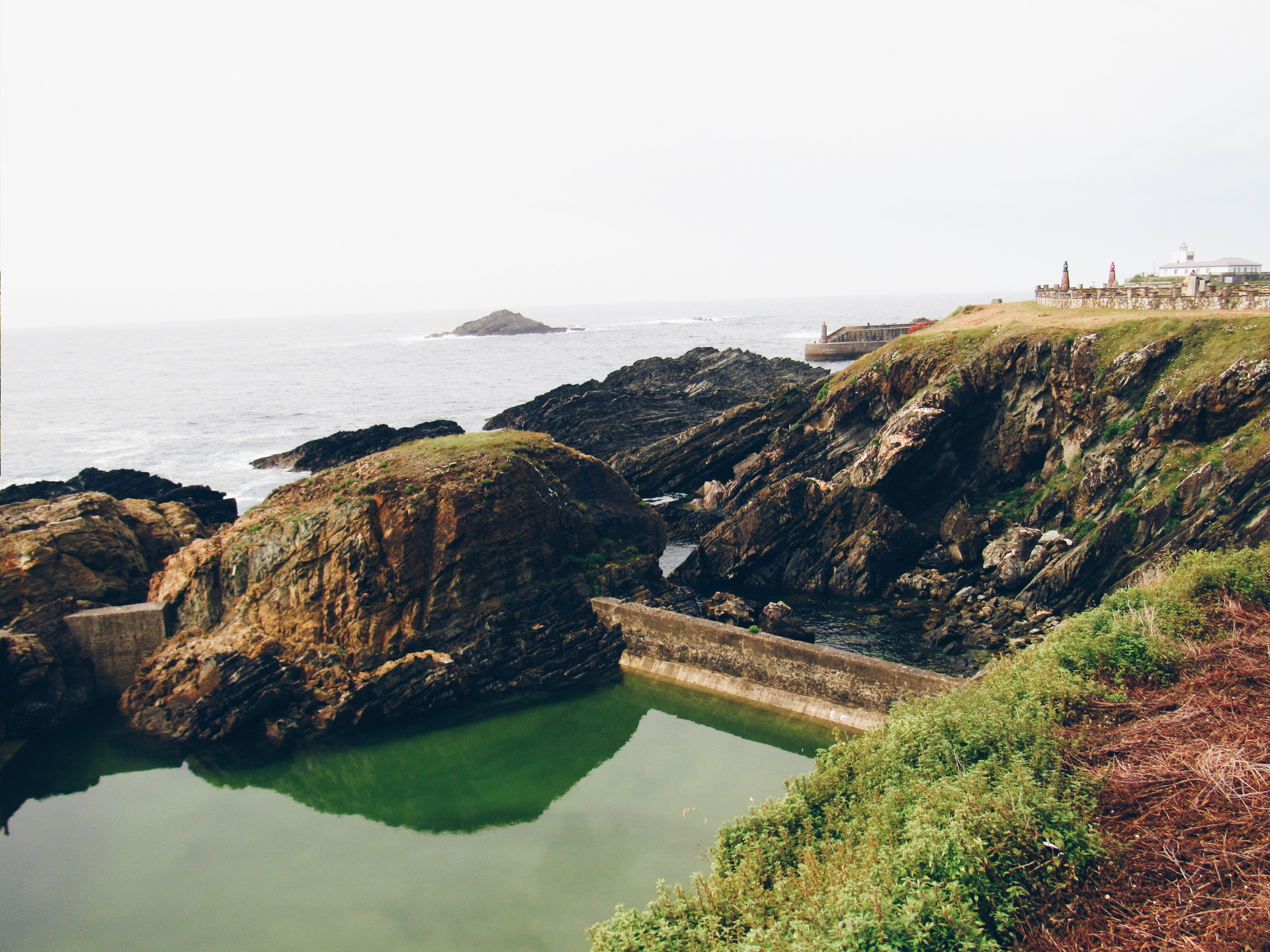
As for the beaches, without any form of doubt the most famous one was the Anguileiro beach where the European Surfing Championships have been taking place during Easter (Semana Santa) for decades. It is a beach which is almost half a kilometre wide and is very well suited and has a blue flag. In addition to surfers, it is also usually very frequented by swimmers during the summer, and to be honest, it is one of the prettiest beaches that we saw in the whole Asturias area.
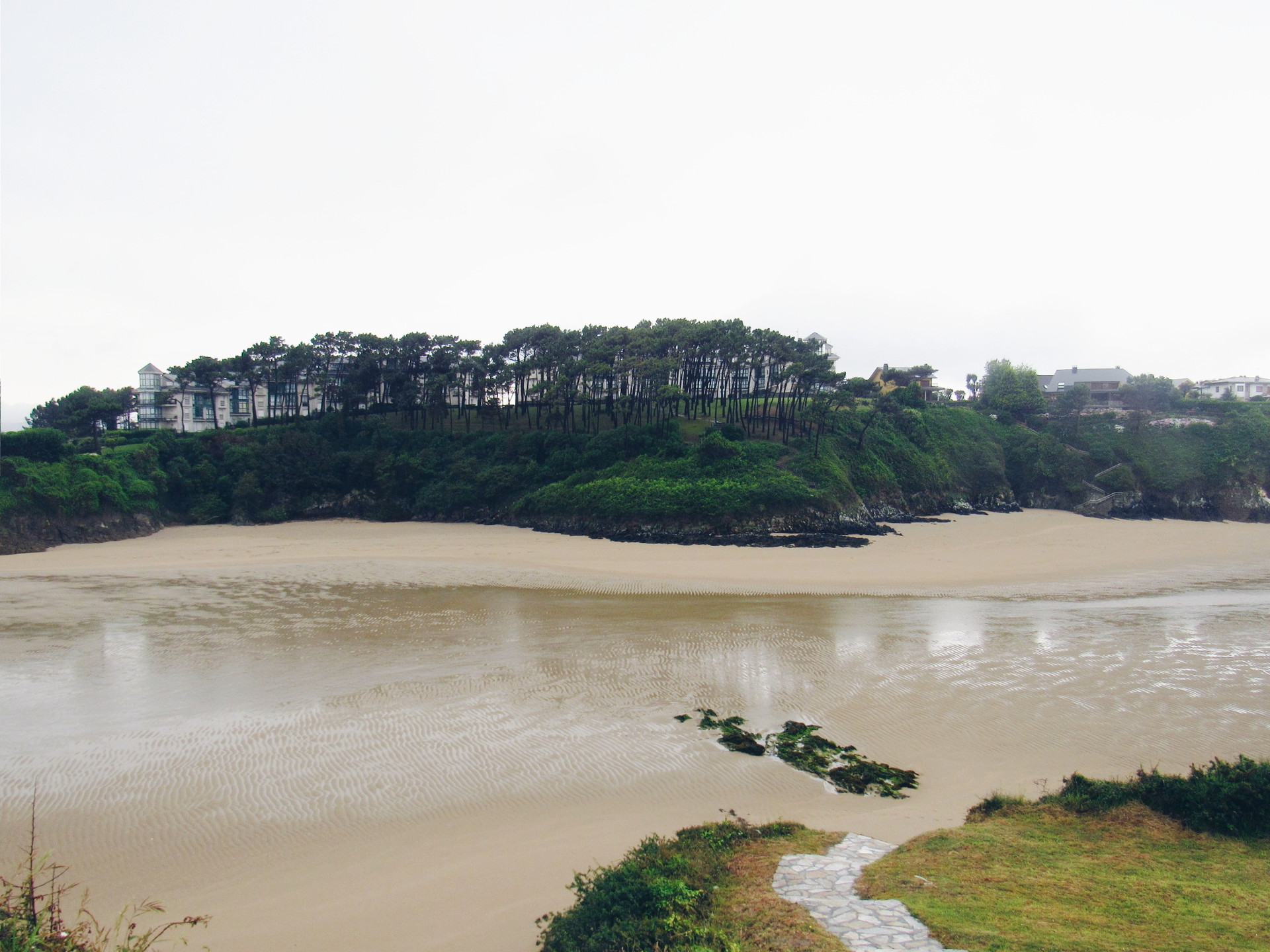
Puerto de Vega
Our next stop was this small town, which was actually very small since it only had a little more that 1,500 habitants. It forms part of the town of Navia and it is well known for being one of the best places to have fresh seafood and fish. Like all fisherman towns, its local economy is hugely linked to fishing and the canning industry.

As an interesting fact, this town has been crowned the winner of "Exemplary Asturias Town" in 1995.
The port stands out for having a defensive wall which in the past was used to defend the town from enemies, such as pirates or the French, and which is now a huge symbol of identity for the Puerto de Vega.
It is essential to go for a walk along the Buluarte stretch, which is to the right of the port, and go up to the Riba viewpoint.
Luarca
Our next stop was this town, which is also a seaside town, situated in Valdes. Just like Tapia de Casariego, it also is part of the Camino de Santiago. It is known as the white village due to its many white-coloured houses, it is one of the towns with the most atmosphere in Asturias. Just like the majority of these Asturian towns, it is famous for its great gastronomy.
It is surrounded by some kinds of mountains in the coast, therefore this combination of sea and mountains makes this location very special. Part of the area which borders Lucara forms part of the "National Network of Protected Natural Spaces. "
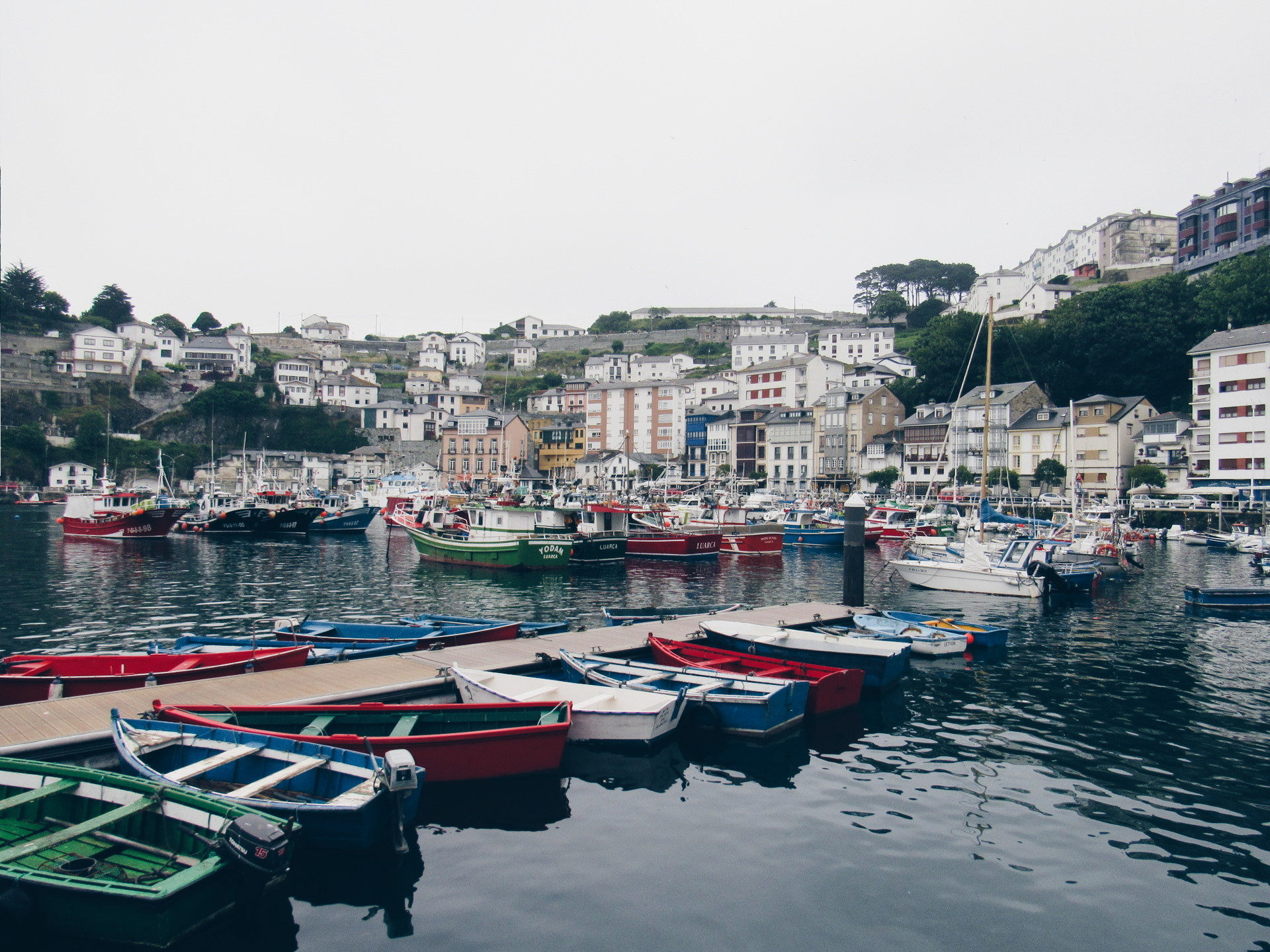
Even though there are more things to visit in Luarca, such as its lighthouse or the Ferrera Palace, we visited it quite quickly as we didn't have much time and focused on visiting its port. This is one of the best places to stop to have lunch or dinner, since there are loads of restaurants along the route which offer great quality food. But without a doubt, the best thing about this area is admiring all of the small boats which come in and out of the port.
Very close to the port, is the famous neighbourhood known as the "fisherman's town. " It is one of the oldest parts of the town and if you walk through the streets, you will end up at the well-known El Chano viewpoint, which offers unbeatable views of Luarca.
Cudillero
If there is a place on this list which you will recognise out of most of them that you have read on this post, it will be Cudillero. It is a maritime town made up of 5 parishes: Ballota, Cudillero, Faedo, Novellana, Oviñana, Piñera, San de Piñera, Samartín de Lluiña and Soutu Lluiña. It is quite small, so it doesn't take too long to explore it.
From the start, its population has been completely involved in fishing, and this is still the same case today, though over the years their tourism has seen an increase. However, they have not lost the essence of their traditional different-coloured houses all different heights along the hill, as if it were a kind of amphitheatre and the houses were stuck onto it. This, along with the colour of the sea and the vegetation that surrounds the town makes this town picturesque.
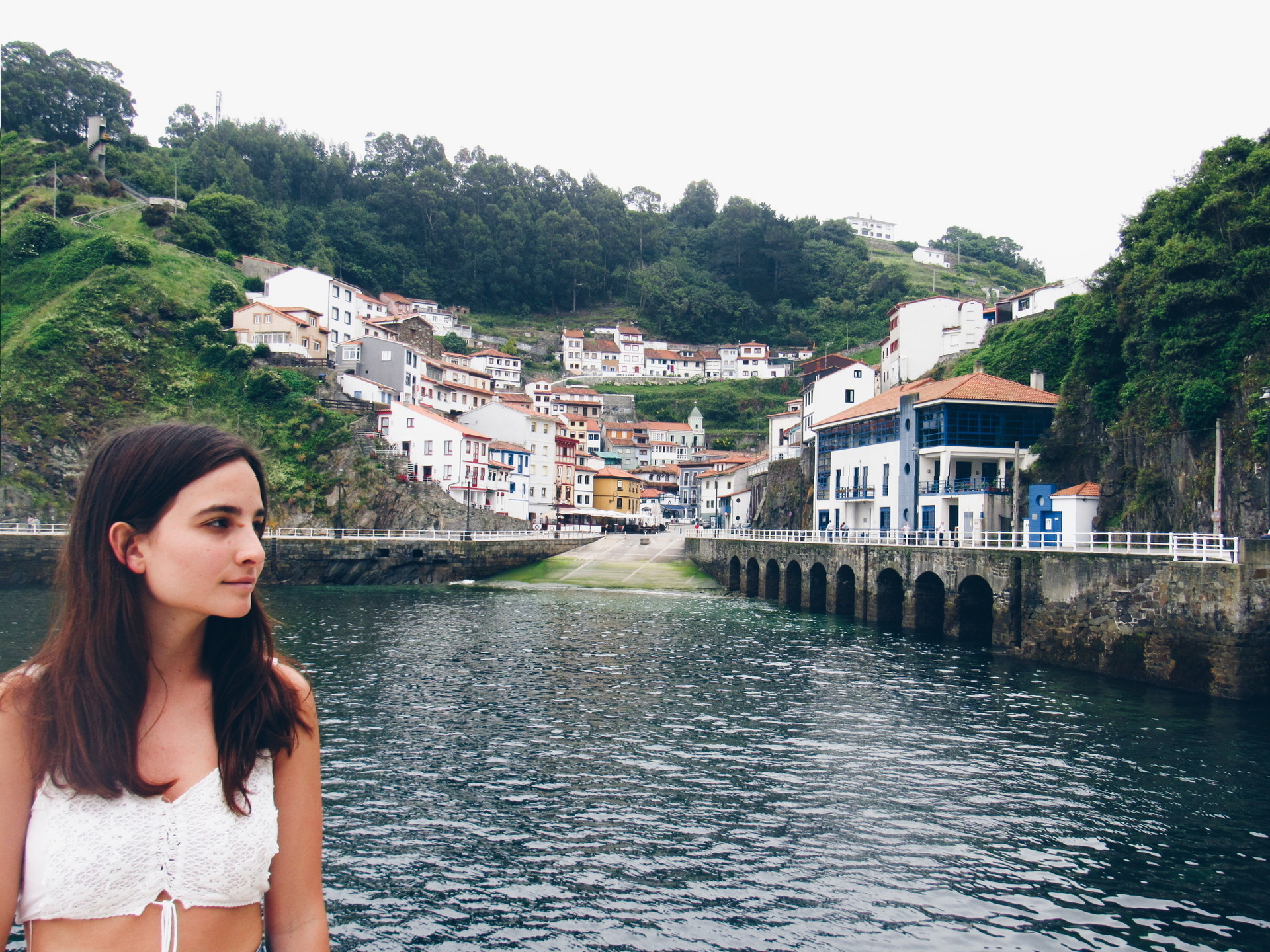
In the Plaza de la Marina, the first thing we came across when entering the town was where the life of the town was. And this is because here there are a handful or restaurants and bars so you can try the best product from this area: the fresh seafood. Here is usually where all of the tourists who visit the town are. We were no different and we sat there for a while to have a drink and enjoy the atmosphere of the town and its landscape.
But the best thing about this town which seems as is it is hidden by the sea, is going up and down its inclines and go around discovering its hundreds of charming alleyways and viewpoints. In the Tourism Office they have maps which have marked routes so that you can go around these streets without getting lost, but when we went it was closed, so we were a little lost. I think it was a good idea since we ended up discovering loads of places and we were surprised ourselves bit by bit. Also, it is not difficult since there are different markers painted on the ground which tell you which way to go.
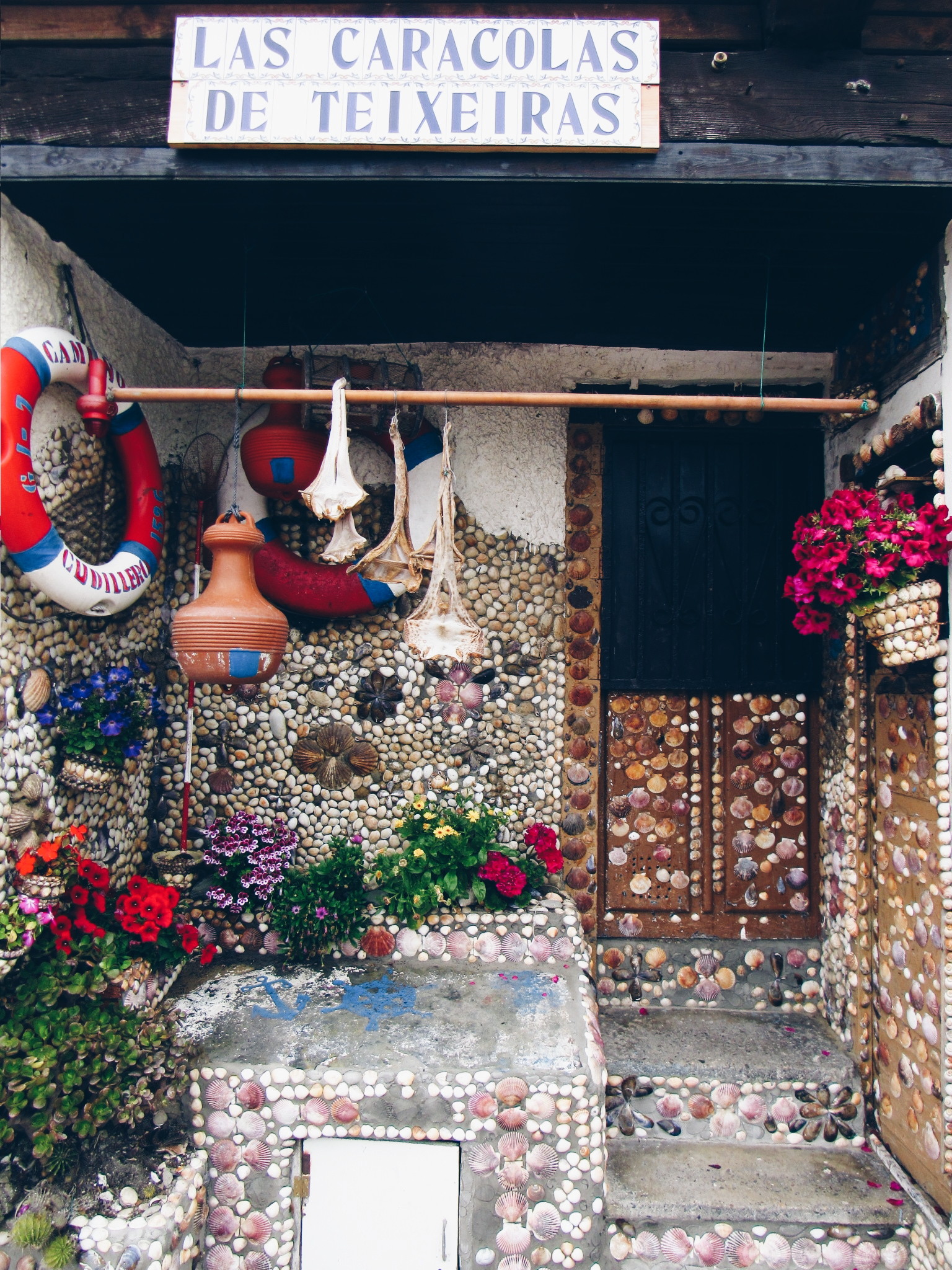
As for the viewpoints, there are a lot although the most well-known and recommended ones are the Atalaya viewpoint, the Garita viewpoint and the Pico viewpoint. They are all very recommendable despite it being a bit tiring to get there, since at least in the summer, the sun hits everything there and the streets are quite steep, However, we were champions and we didn't want to go to Cudillero without discovering all of its corners.
Another plan to do in Cudillero is to go around the pier so that you have a different perspective of the town and all of the colourful boats docked at the port.
Playa del silencio
This beach which is protected by cliffs is one of the places which left me the most amazed during this road trip through the North of Asturias. Only 15 minutes from Cudillero, to the west, there is this 500 metres wide beach. The name really caught my attention but as soon as you step onto the "del Silencio" beach it completely makes sense.
When it was hardly known, it was a beach which was frequented by people who practised nudism. Nowadays, it is not as common anymore, since in recent years the amount of visits to the beach have increased; it is more and more well-known and it has also considerably improved its access, but a day like when I went at the start of June and in the morning, it was very peaceful since we only came across a couple of people, at least in my experience.
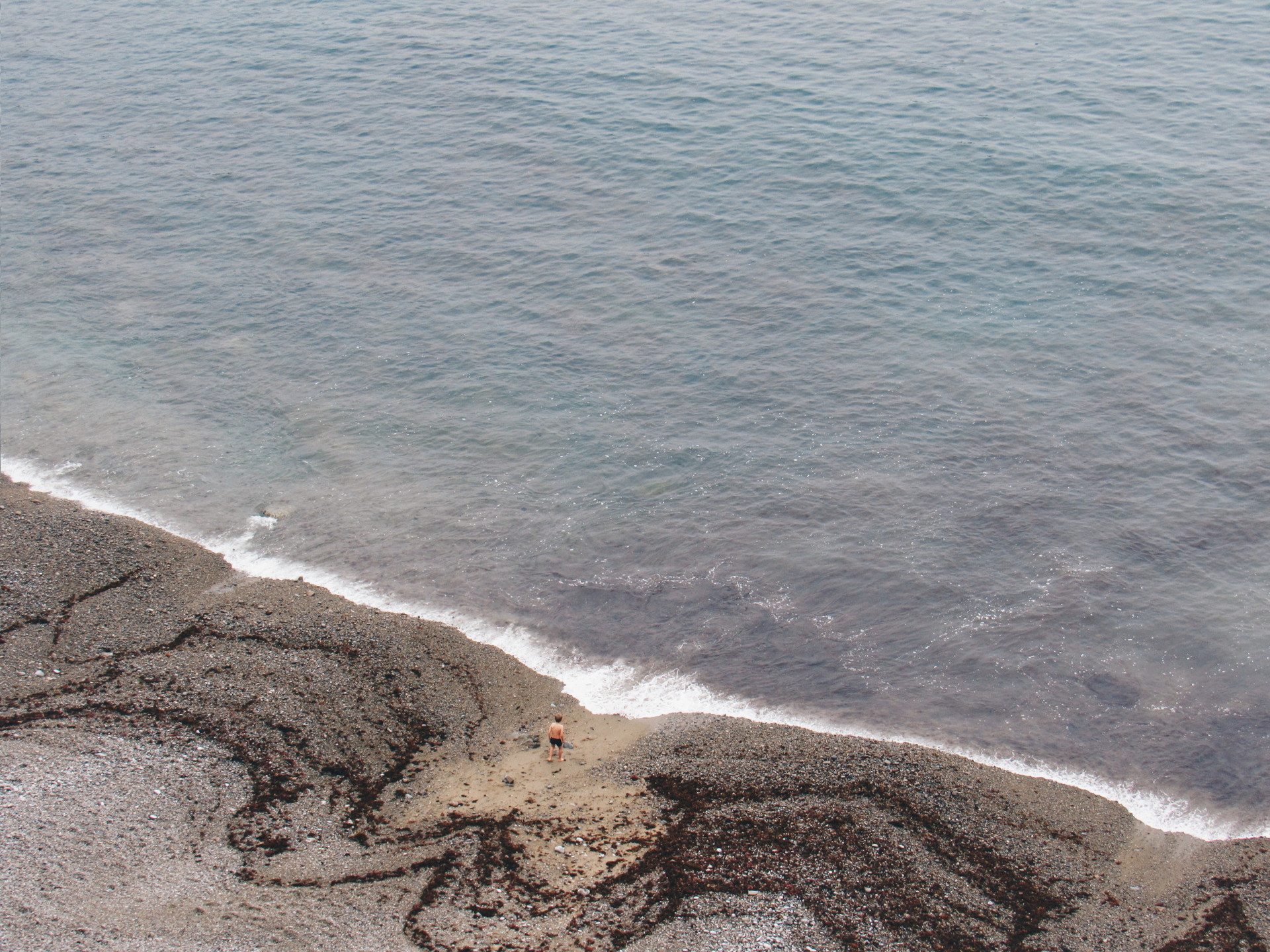
It is very important to bear the tide in mind and take a look on the internet to see if it is high or low, since when the tide is high the beach practically disappears and since we've made the trip it is worth seeing it with the tide more or less low. Anyway, if you want to go for a dip, when the tide is quite high there is enough space for swimming, however, when it is lower it is easier to hit the rocks below. We didn't brave a dip because the water was quite cold and it wasn't one of the warmest summer days. However, thanks to its calm and crystal-clear waters, it is perfect for diving or snorkelling.
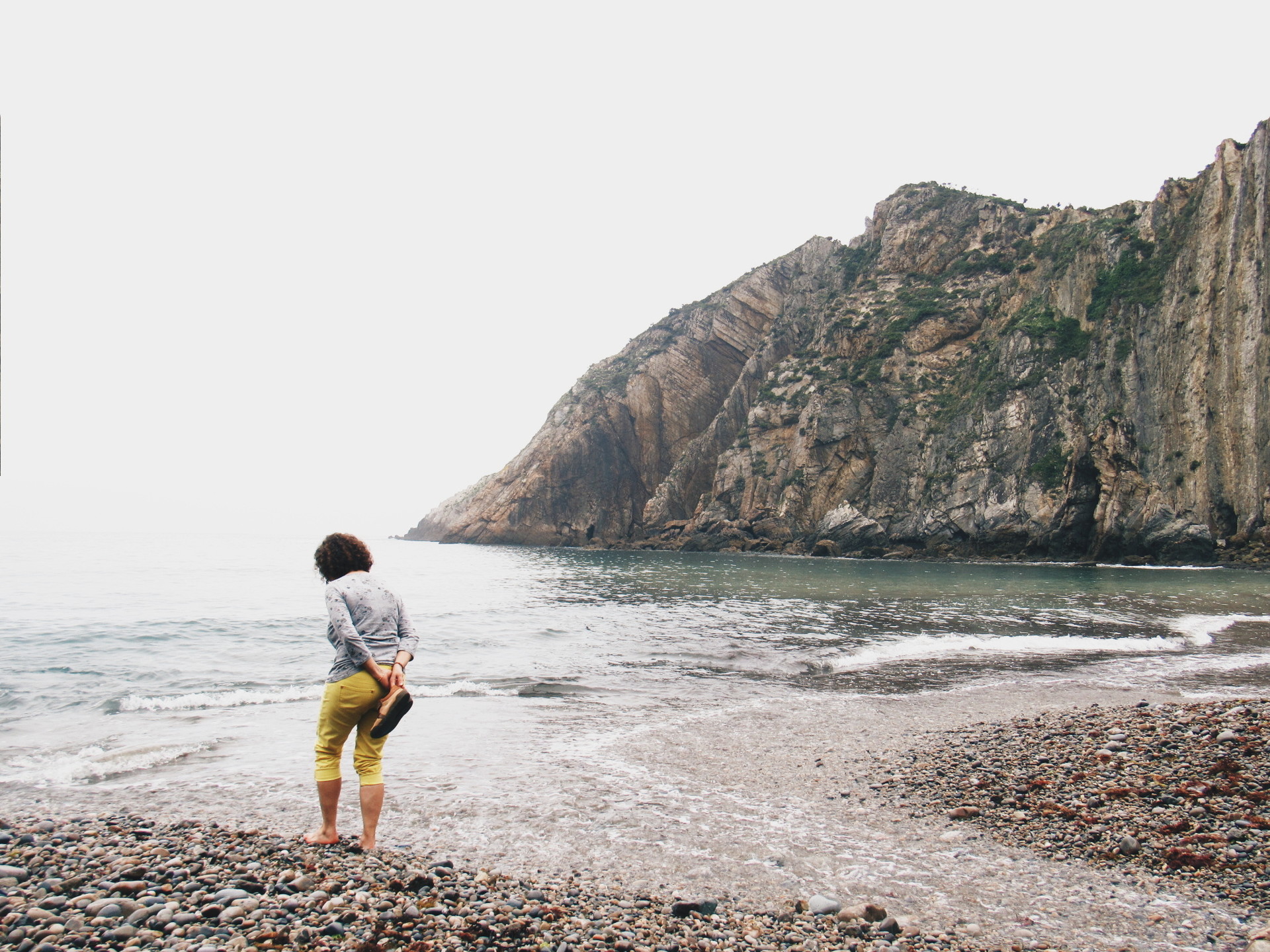
To access it, you can park the car in the town which the beach is part of (Castaneras) and then walk for a while to get there. Or you can take a right, and if you are lucky like we were, you won't have any problems leaving it on a side of the road where you will start to see some cars parked where it won't be in the way, or in some area which is more or less suitable to leave a car. Anyway, from there you have to walk for half a kilometre approximately up quite a steep incline in the woods, it took us about 15 minutes.
At different points along the route you will start to see a view of the beach from above, it is worth stopping for a bit at some of these "viewpoints" to appreciate the views of the beach and the nature in its purest form which surrounds it.
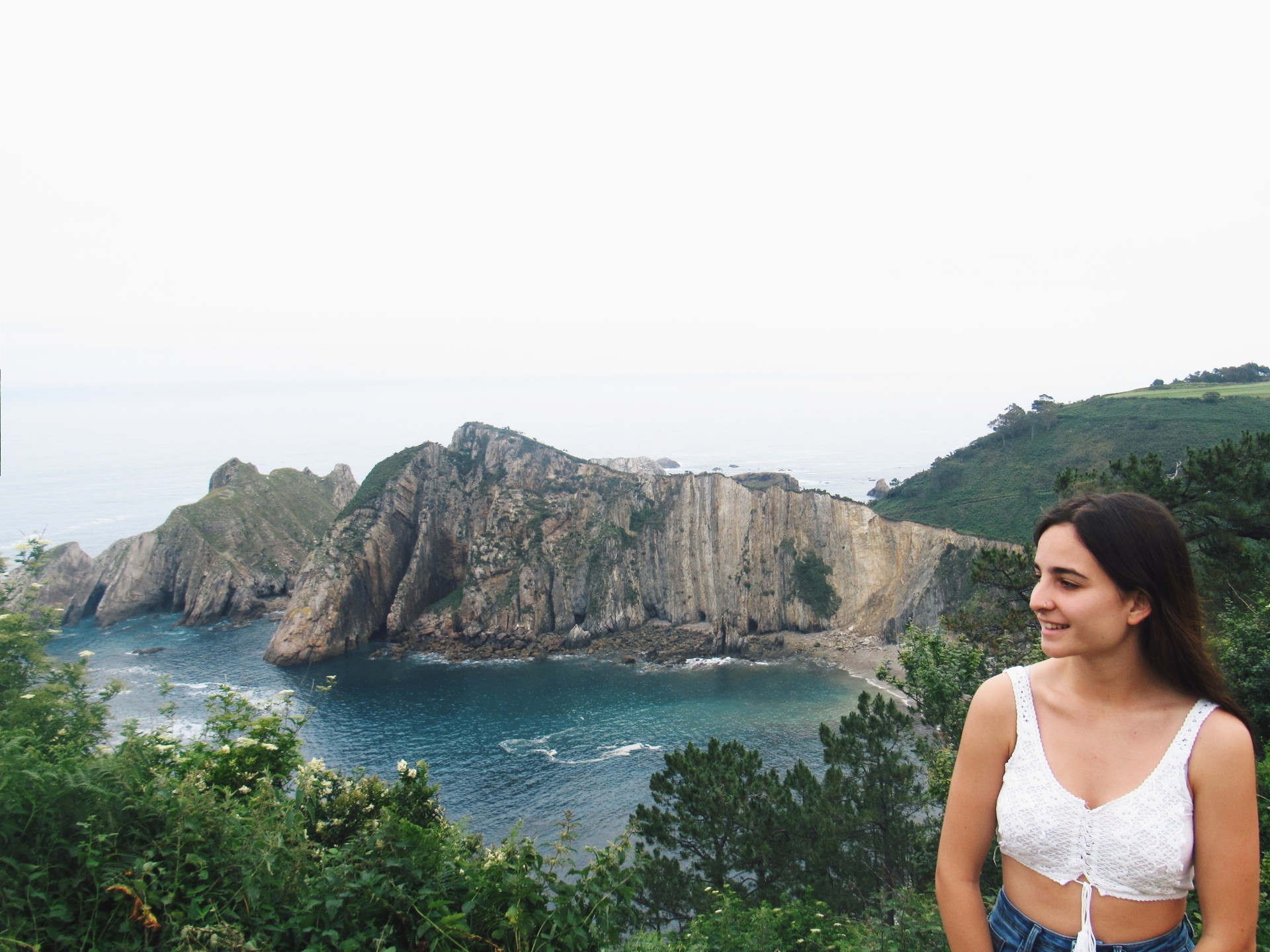
Once you're at the beach, the best thing to do is to go around each one of the nooks and crannies since it is full of sharp rocks, caves in the cliffs... Also, on both sides of the beach, there are rock pinnacles and little islands which make the landscape even more special.
But without a doubt, the best thing about this beach is that it still has a wild element, since you won't come across any beach bars or toilets, the only thing there is the stairs which allow you to access it.
And so that's it! Thank you once again to everyone who reads my blog.
Photo gallery
Content available in other languages
- Español: Ruta por el norte de Asturias
- Italiano: Itinerario nelle Asturie settentrionali
Want to have your own Erasmus blog?
If you are experiencing living abroad, you're an avid traveller or want to promote the city where you live... create your own blog and share your adventures!
I want to create my Erasmus blog! →














Comments (0 comments)